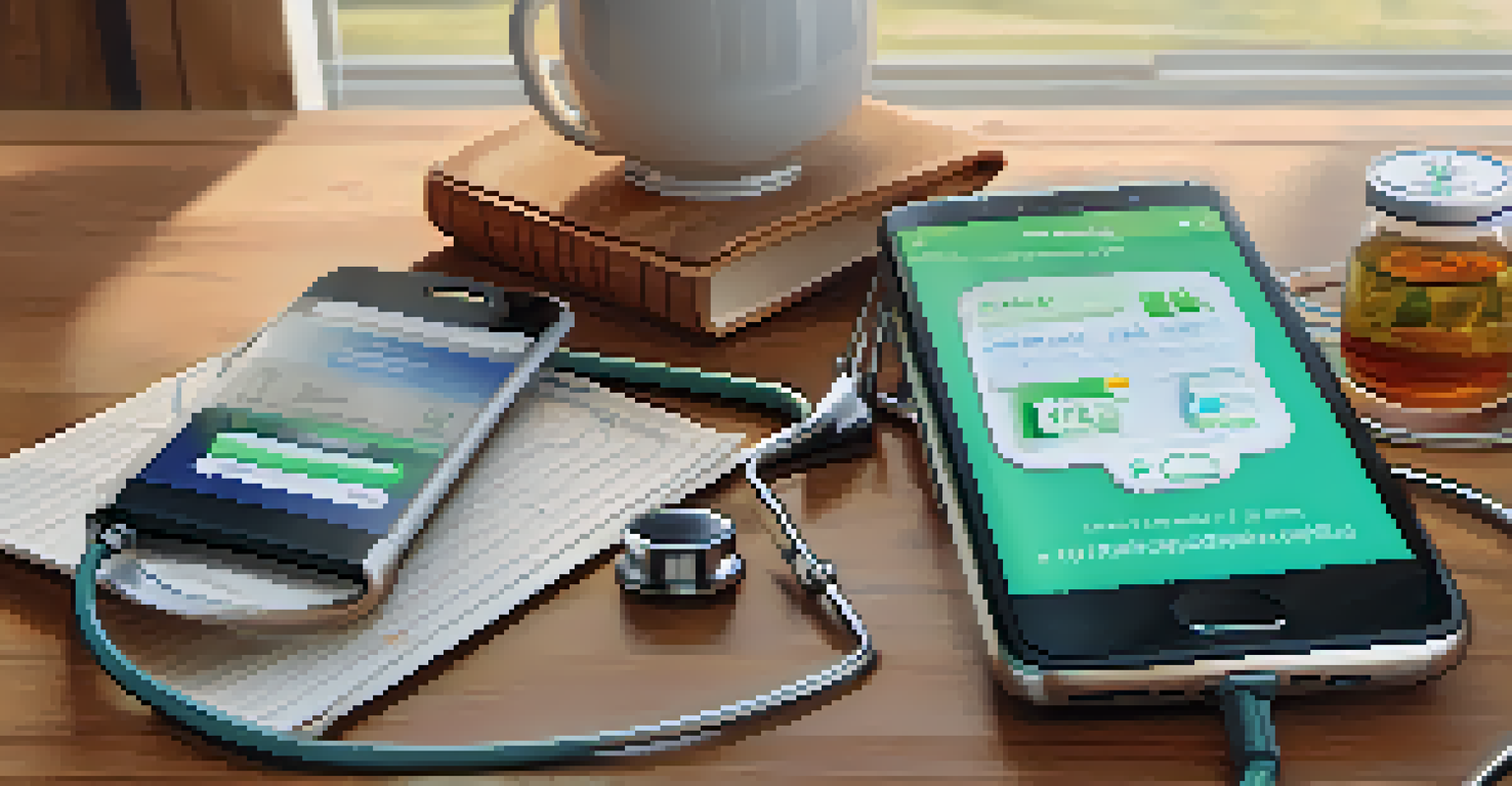Health Literacy: A Critical Component of Patient Safety

What is Health Literacy and Why It Matters
Health literacy refers to an individual's ability to obtain, process, and understand basic health information. It plays a crucial role in how patients navigate the healthcare system, comprehend medical instructions, and make informed decisions about their health. When patients possess strong health literacy skills, they are more likely to engage in preventive care and follow treatment plans effectively.
Health literacy is critical to patient safety and quality of care. It empowers patients to take an active role in their health management.
Imagine trying to assemble a piece of furniture without clear instructions; the same confusion arises when patients face complex medical information without proper understanding. Low health literacy can lead to miscommunication between healthcare providers and patients, resulting in medication errors, missed appointments, and ultimately, compromised patient safety. It's essential for everyone to grasp health concepts to maintain their well-being.
In summary, health literacy is not just a personal skill but a critical component of public health. Enhancing health literacy can empower patients, improve health outcomes, and reduce healthcare costs. As we delve deeper into this topic, we'll uncover how fostering health literacy can create a safer healthcare environment for everyone.
The Impact of Low Health Literacy on Patient Safety
Low health literacy can have dire consequences for patient safety. Patients who struggle to understand their health information may misinterpret medication instructions or fail to recognize symptoms that require urgent medical attention. This misunderstanding can lead to adverse events, creating a cycle of poor health outcomes that could have been avoided with better comprehension.

For instance, consider a patient prescribed a new medication. If they don't fully understand the dosage or the importance of adhering to the schedule, they might take too much or too little, jeopardizing their recovery. Such scenarios underscore the importance of clear communication and education in healthcare settings, as even well-intentioned patients can make mistakes when they lack the necessary knowledge.
Health Literacy Empowers Patients
Understanding health information enables patients to make informed decisions and engage in their care effectively.
Ultimately, the ripple effect of low health literacy extends beyond the individual. It can strain healthcare resources, increase hospital readmissions, and contribute to the overall inefficiency of the healthcare system. By addressing these literacy gaps, we can enhance patient safety and create a more effective healthcare landscape.
Strategies to Improve Health Literacy in Healthcare
Improving health literacy requires a multifaceted approach that involves both healthcare providers and patients. First and foremost, healthcare professionals should simplify communication by using plain language and avoiding medical jargon. When complex terms are unavoidable, it’s essential to explain them in straightforward terms, ensuring patients feel comfortable asking questions.
The ability to understand health information is essential for making informed decisions about one's health and well-being.
In addition, the use of visual aids, such as diagrams or videos, can significantly enhance understanding. These tools can help demystify complicated concepts, making information more accessible. For example, a short video explaining a surgical procedure can help patients visualize what to expect, reducing anxiety and increasing compliance with pre-operative instructions.
Lastly, fostering an open dialogue between providers and patients is key. Encouraging patients to express their concerns and ask questions not only empowers them but also gives healthcare providers valuable insights into the patient's understanding. By creating a culture of collaboration, we can significantly enhance health literacy and, in turn, patient safety.
The Role of Technology in Enhancing Health Literacy
In today's digital age, technology plays a pivotal role in promoting health literacy. Mobile apps, online resources, and telehealth platforms can provide patients with easily accessible information about their health conditions and treatment options. These digital tools can empower individuals to take control of their health by providing them with resources at their fingertips.
For example, health apps can offer medication reminders, track health metrics, and provide educational content tailored to a patient's specific needs. With interactive features, these apps encourage users to engage with their health information regularly. This continuous interaction can significantly bolster understanding and retention of vital health knowledge.
Low Literacy Risks Patient Safety
Patients with low health literacy may misunderstand medical instructions, leading to medication errors and adverse health outcomes.
However, it’s important to ensure that these technological tools are user-friendly and designed with the patient's needs in mind. Accessibility is key; not all patients are tech-savvy, and some may have limited internet access. By addressing these barriers, we can create a more inclusive approach to health literacy that benefits everyone.
Community Initiatives: Building Health Literacy Together
Community initiatives can be instrumental in promoting health literacy on a broader scale. Local organizations, schools, and healthcare providers can collaborate to create programs that educate the public about health topics. These initiatives can take various forms, such as workshops, health fairs, or informational sessions, making learning engaging and accessible.
For instance, a community health fair could include interactive booths where attendees can learn about nutrition, chronic disease management, or preventative care. Such hands-on experiences can make learning fun and memorable, fostering a sense of community while enhancing individual health knowledge. When people learn together, they often share insights and support each other in their health journeys.
Moreover, these initiatives can target specific populations that may be underserved or at risk. Tailoring programs to meet the unique needs of different demographics can ensure that everyone has the opportunity to improve their health literacy. By working together as a community, we can cultivate a culture of health literacy that prioritizes patient safety.
Empowering Patients Through Education and Resources
Empowering patients begins with education and access to reliable resources. Healthcare providers should equip patients with information that enables them to make informed decisions about their care. This includes providing written materials, access to reputable websites, and referral to support groups where patients can connect with others facing similar health challenges.
For example, providing brochures that explain medical conditions in simple language can help patients understand their health better. Additionally, directing patients to trustworthy websites, like those run by reputable health organizations, can offer them a wealth of information at their own pace. These resources can help bridge the gap between medical jargon and everyday language, making health information more relatable.
Technology Enhances Health Education
Digital tools and resources can provide accessible health information, helping patients better manage their health.
Ultimately, when patients feel informed and empowered, they are more likely to take an active role in their health care. This engagement not only improves health outcomes but also enhances patient safety by fostering a proactive approach to health management. By prioritizing education and resources, we can create a healthier, safer community.
The Future of Health Literacy and Patient Safety
As we look to the future, the importance of health literacy in patient safety will only continue to grow. With rapidly advancing medical knowledge and increasingly complex healthcare systems, patients will need to navigate an ever-changing landscape. Ensuring that individuals have the skills to understand and engage with their health information is paramount to fostering a safer environment.
Innovations in technology, education, and community engagement will play crucial roles in shaping the future of health literacy. From telehealth services to interactive educational platforms, we have the opportunity to make health information more accessible than ever before. As these tools evolve, they will empower patients to take charge of their health in ways we have yet to imagine.

Ultimately, the goal is to create a healthcare system where every patient feels confident and competent in managing their health. By prioritizing health literacy as a fundamental component of patient safety, we can not only improve individual outcomes but also enhance the overall quality of care provided in our communities.